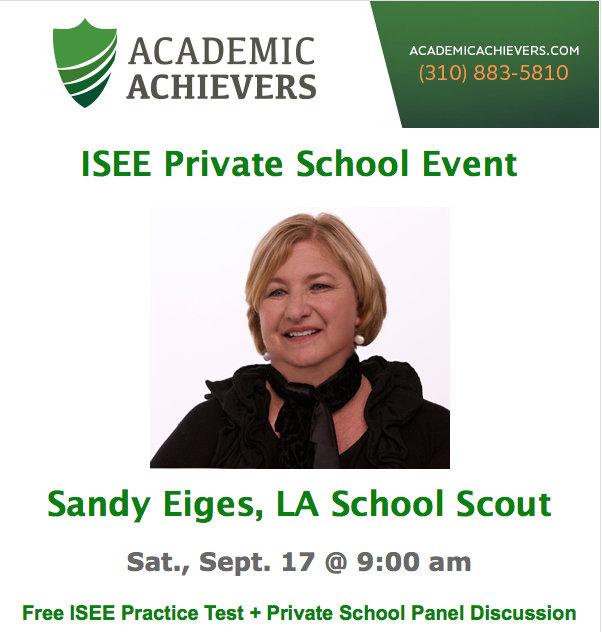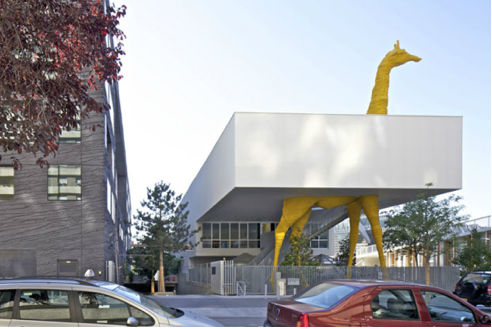Applying to Private Middle and High School in Los Angeles
Yes, it’s already that time! Some schools have their fall open houses scheduled already or will soon. Ditto with other events, such as the increasing number of parent coffees hosted by current families at the different schools.
If you are considering the private school option for middle or high school, the most important piece of applying to private school is to put together a plan to see what’s out there, narrow down your list, and get through the multi-faceted application process. This is definitely a process, and not just a one-time effort.
A private school application is a process with many moving parts. Some of these elements are in your control – touring schools, filling out the applications, meeting application deadlines, interviewing with admissions staff – while some definitely are not – teacher recommendations, for example, or how your student does on the entrance exam, or in the interview or assessment. People can find this process both time-consuming and nerve-wracking. The reason is simple; this is a complex process, and private schools are selective and can choose the students they accept into the school.
While it might be time-consuming, you should read through the websites for each of the schools you’re interested in. The school open house and tour will give you a better feel for the school and the families that attend that school; the websites go into great detail about the curriculum and philosophy of each school. But let’s take a look at the steps in the private school selection process, to help you get a better overview of what’s involved. Applying to private school is the same for every school and includes:
1. Identifying schools – in putting together your initial list of schools, do take your child’s advisor or academic dean’s recommendations into account. But it’s important to keep an open mind and tour a variety of schools, not just the one or two that everyone’s heard of. Your sister’s hairdresser’s nephew might be doing great at a particular school, but that bears no relation to how your child might fare at the same school. You are looking for your student – not for other learners, and definitely not for yourself. Tour as many schools as possible, and then narrow down your list. Plan to apply to at least four schools.
2. Attending tours and/or Open Houses – this is mandatory. There is a separate tour/open house for middle and high school students. Open Houses generally take place nights and weekends, while tours are usually during the school day. Some schools will allow you to do both.
3. Completing applications – most of these are online these days and there is a parent section and a student section. School applications may have anywhere from 3-10 questions about your child, their school experience so far, your family’s expectations about school, and how you have participated in your child’s current school. For the student you can expect a number of questions requiring one word or one sentence answers, as well as an essay – or two or three – with a writing prompt. This must be completed by the student, not the parent, and definitely not a hired hand! In addition to a school’s main application questionnaire, you will have to provide:
- Payment – anywhere from $100-$200 per application.
- Photo – a photo of your child.
- School recommendation –This may be both a request for a transcript as well as a recommendation from your current head of school.
- Teacher recommendations – they will also provide teacher recommendation forms that you will also give to your current school.
4. Parent Interview – once you have submitted an application, the school will schedule your interview. Unless you’re out of town on the date you’re assigned, you should make every effort to make the assigned interview date. You want the school to feel like it will be easy to work with you! Please be aware, though, that for middle and high school many schools do not interview the parents at all.
5. Student assessment – there are two types of student assessments required for middle and high school students: the ISEE (Independent School Entrance Exam), the SSAT (Secondary School Admissions Test, used for some L.A. schools and boarding schools nation-wide) or the HSPT (High School Placement Test for Catholic schools); and the student interview. Once you have submitted an application, the school will schedule the student interview. This may be an individual or group interview.
From 5th grade and up, most incoming students applying to private schools must take the ISEE – the Independent School Entrance Exam. At least one school requires the ISEE for 4th grade applicants. Check with the requirement of each particular school, and be aware that the test must be taken, with results sent to the schools you’re applying to, prior to the last acceptable testing date for each school. These are challenging exams; for most students, prep is advisable. If your student requires special accommodations, like extra time, be prepared to provide documentation supporting that need.
6. Student shadow day – some schools allow students to spend a shadow day at the school, whether that is individually organized – attending specific classes and activities – or for a group of students on a certain day. It is certainly worth taking part if offered – this is a great way for the student to get more of an inside look at the school.
Los Angeles is a very large city, with a limited number of private schools. Added to this is the unhappy fact that siblings, legacies and school personnel get preference in admissions. The only way for you to affect how a school views your child and your family is to apply to schools that are really the best possible fit.
I can’t stress this enough – the most important factor in applying to private schools is making sure that you’re applying to schools that are the right fit for your child. That means taking your wish list out of the equation, to some extent. Is this the right school for them? All schools should provide intellectual challenges, but there is a difference between a challenge and a struggle. Knowing who your child is as a student is key. So yes, tour a variety of schools, by all means. But also make sure that you’re not just considering a school because it fits you. It really needs to be a fit for them.
Thoroughly overwhelmed about the school selection and application process Kindergarten through college? I am now scheduling consultations for September 2020 admissions. Please contact Sandy Eiges at www.laschoolscout.com for Kindergarten-College, or call me directly at 310 926 0050.
Stay up to date on the latest L.A. private schools news and events! Follow Beyond The Brochure on Facebook. Buy the book on Amazon.




